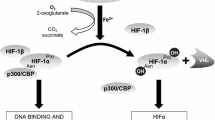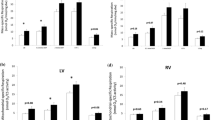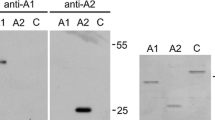Abstract
The muscle ankyrin repeat proteins (MARPs), also known as muscle stretch proteins, are members of a conserved family of genes known to be induced under stress conditions. The three primary members, cardiac ankyrin repeat protein (CARP), Ankyrin Repeat Domain 2 (ARPP), and diabetes-related ankyrin repeat protein (DARP) are expressed in cardiac and skeletal muscle, binding to the giant protein titin. In addition, both CARP and ARPP are proposed to have regulatory functions, shuttling to the nucleus and serving as a liaison between mechanical stress and the transcriptional response. In mouse and human models, CARP is induced during wound healing, denervation, neurogenesis, and angiogenesis; ARPP during an immobilized stretch; DARP is up-regulated in type 2 diabetes, as well as brown adipose tissue, suggesting a role in energy metabolism. Most animal models have focused on stretch response stress; however, little is known about the response of MARPs to hypoxic stress. The blind subterranean mole rat is a model for hypoxia tolerance with the ability to survive extremely hypoxic and hypercapnic underground conditions. Following observations that CARP is differentially expressed in the Spalax muscle in response to hypoxia, we have sequenced the Spalax orthologs of the MARP proteins and profiled expression patterns under varying levels of hypoxic stress among two Spalax species and Rattus. Results show expression patterns highly correlated to the degree of hypoxic tolerance among the three species. Understanding the differences in MARP expression further elucidates mechanisms of hypoxia tolerance with relevance to human ischemic disease.






Similar content being viewed by others
References
Arieli R, Nevo E (1991) Hypoxic survival differs between two mole rat species (Spalax ehrenbergi) of humid and arid habitats. Comp Biochem Physiol A 100:543–545
Arieli R, Heth G, Nevo E, Hoch D (1986a) Hematocrit and hemoglobin concentration in four chromosomal species and some isolated populations of actively speciating subterranean mole rats in Israel. Experientia 42:441–443
Arieli R, Heth G, Nevo E, Hoch D (1986b) Adaptive heart and breathing frequencies in 4 ecologically differentiating chromosomal species of mole rats in Israel. Experientia 42:131–133
Ashur-Fabian O, Avivi A, Trakhtenbrot L, Adamsky K, Cohen M, Kajakaro G, Joel A, Amariglio N, Nevo E, Rechavi G (2004) Evolution of p53 in hypoxia-stressed Spalax mimics human tumor mutation. Proc Natl Acad Sci USA 101:12236–12241
Avivi A, Resnick MB, Nevo E, Joel A, Levy AP (1999) Adaptive hypoxic tolerance in the subterranean mole rat Spalax ehrenbergi: the role of vascular endothelial growth factor. FEBS Lett 452:133–140
Avivi A, Shams I, Joel A, Lache O, Levy AP, Nevo E (2005) Increased blood vessel density provides the mole rat physiological tolerance to its hypoxic subterranean habitat. FASEB J 19:1314–1316
Avivi A, Brodsky L, Nevo E, Band MR (2006) Differential expression profiling of the blind subterranean mole rat Spalax ehrenbergi superspecies: bioprospecting for hypoxia tolerance. Physiol Genomics 27:54–64
Avivi A, Ashur-Fabian O, Joel A, Trakhtenbrot L, Adamsky K, Goldstein I, Amariglio N, Rechavi G, Nevo E (2007) P53 in blind subterranean mole rats—loss-of-function versus gain-of-function activities on newly cloned Spalax target genes. Oncogene 26:2507–2512
Avivi A, Band M, Joel A, Shenzer P, Coleman R (2009) Adaptive features of skeletal muscles of mole rats (Spalax ehrenbergi) to intensive activity under subterranean hypoxic conditions. Acta Histochem 111:415–419
Band M, Shams I, Joel A, Avivi A (2008) Cloning and in vivo expression of vascular endothelial growth factor receptor 2 (Flk1) in the naturally hypoxia-tolerant subterranean mole rat. FASEB J 22:105–112
Barash IA, Bang ML, Mathew L, Greaser ML, Chen J, Lieber RL (2007) Structural and regulatory roles of muscle ankyrin repeat protein family in skeletal muscle. Am J Physiol Cell Physiol 293:C218–C227
Bean C, Facchinello N, Faulkner G, Lanfranchi G (2008) The effects of Ankrd2 alteration indicate its involvement in cell cycle regulation during muscle differentiation. Biochim Biophys Acta 1783:1023–1035
Burlington RF, Maher JT (1968) Effect of anoxia on mechanical performance of isolated atria from ground squirrels and rats acclimatized to altitude. Nature 219:1370–1371
Bustin SA (2002) Quantification of mRNA using real-time reverse transcription PCR (RT-PCR): trends and problems. J Mol Endocrinol 29:23–39
Greenlee RT, Murray T, Bolden S, Wingo PA (2000) Cancer statistics, 2000. CA Cancer J Clin 50:7–33
Han XJ, Chae JK, Lee MJ, You KR, Lee BH, Kim DG (2005) Involvement of GADD153 and cardiac ankyrin repeat protein in hypoxia-induced apoptosis of H9c2 cells. J Biol Chem 280:23122–23129
Ikeda K, Emoto N, Matsuo M, Yokoyama M (2003) Molecular identification and characterization of a novel nuclear protein whose expression is up-regulated in insulin-resistant animals. J Biol Chem 278:3514–3520
Kerem D, Hammond DD, Elsner R (1973) Tissue glycogen levels in the Weddell seal, Leptonychotes weddelli: a possible adaptation to asphyxial hypoxia. Comp Biochem Physiol A 45:731–736
Kojic S, Medeot E, Guccione E, Krmac H, Zara I, Martinelli V, Valle G, Faulkner G (2004) The Ankrd2 protein, a link between the sarcomere and the nucleus in skeletal muscle. J Mol Biol 339:313–325
Kuo H, Chen J, Ruiz-Lozano P, Zou Y, Nemer M, Chien KR (1999) Control of segmental expression of the cardiac-restricted ankyrin repeat protein gene by distinct regulatory pathways in murine cardiogenesis. Development 126:4223–4234
Li J, Mahajan A, Tsai MD (2006) Ankyrin repeat: a unique motif mediating protein-protein interactions. Biochemistry 45:15168–15178
Linke S, Hampton-Smith RJ, Peet DJ (2007) Characterization of ankyrin repeat-containing proteins as substrates of the asparaginyl hydroxylase factor inhibiting hypoxia-inducible transcription factor. Methods Enzymol 435:61–85
McKoy G, Hou Y, Yang SY, Vega Avelaira D, Degens H, Goldspink G, Coulton GR (2005) Expression of Ankrd2 in fast and slow muscles and its response to stretch are consistent with a role in slow muscle function. J Appl Physiol 98:2337–2343 discussion 2320
Miller MK, Bang ML, Witt CC, Labeit D, Trombitas C, Watanabe K, Granzier H, McElhinny AS, Gregorio CC, Labeit S (2003) The muscle ankyrin repeat proteins: CARP, ankrd2/Arpp and DARP as a family of titin filament-based stress response molecules. J Mol Biol 333:951–964
Nevo E (1961) Observations on Israeli populations of the mole rat, Spalax ehrenbergi (Nehring, 1898). Mammalia 25:127–144
Nevo E (1999) Mosaic evolution of subterranean mammals: regression, progression and global convergence. Oxford University Press, Oxford
Nevo E, Ivanitskaya E, Beiles A (2001) Adaptive radiation of blind subterranean mole rats. Backhuys, Leiden
Samaras SE, Shi Y, Davidson JM (2006) CARP: fishing for novel mechanisms of neovascularization. J Investig Dermatol Symp Proc 11:124–131
Semenza GL (2000) HIF-1: mediator of physiological and pathophysiological responses to hypoxia. J Appl Physiol 88:1474–1480
Shams I, Avivi A, Nevo E (2004) Hypoxic stress tolerance of the blind subterranean mole rat: expression of erythropoietin and hypoxia-inducible factor 1 alpha. Proc Natl Acad Sci USA 101:9698–9703
Shams I, Avivi A, Nevo E (2005a) Oxygen and carbon dioxide fluctuations in burrows of subterranean blind mole rats indicate tolerance to hypoxic-hypercapnic stresses. Comp Biochem Physiol A Mol Integr Physiol 142:376–382
Shams I, Nevo E, Avivi A (2005b) Erythropoietin receptor spliced forms differentially expressed in blind subterranean mole rats. FASEB J 19:1749–1751
Shams I, Nevo E, Avivi A (2005c) Ontogenetic expression of erythropoietin and hypoxia-inducible factor-1 alpha genes in subterranean blind mole rats. FASEB J 19:307–309
Shi Y, Reitmaier B, Regenbogen J, Slowey RM, Opalenik SR, Wolf E, Goppelt A, Davidson JM (2005) CARP, a cardiac ankyrin repeat protein, is up-regulated during wound healing and induces angiogenesis in experimental granulation tissue. Am J Pathol 166:303–312
Shweiki D, Itin A, Soffer D, Keshet E (1992) Vascular endothelial growth factor induced by hypoxia may mediate hypoxia-initiated angiogenesis. Nature 359:843–845
Stam FJ, MacGillavry HD, Armstrong NJ, de Gunst MC, Zhang Y, van Kesteren RE, Smit AB, Verhaagen J (2007) Identification of candidate transcriptional modulators involved in successful regeneration after nerve injury. Eur J Neurosci 25:3629–3637
Tsukamoto Y, Senda T, Nakano T, Nakada C, Hida T, Ishiguro N, Kondo G, Baba T, Sato K, Osaki M, Mori S, Ito H, Moriyama M (2002) Arpp, a new homolog of carp, is preferentially expressed in type 1 skeletal muscle fibers and is markedly induced by denervation. Lab Invest 82:645–655
Tsukamoto Y, Hijiya N, Yano S, Yokoyama S, Nakada C, Uchida T, Matsuura K, Moriyama M (2008) Arpp/Ankrd2, a member of the muscle ankyrin repeat proteins (MARPs), translocates from the I-band to the nucleus after muscle injury. Histochem Cell Biol 129:55–64
Zou Y, Evans S, Chen J, Kuo HC, Harvey RP, Chien KR (1997) CARP, a cardiac ankyrin repeat protein, is downstream in the Nkx2-5 homeobox gene pathway. Development 124:793–804
Acknowledgment
This study was supported by the United States–Israel Binational Science Foundation (BSF) Grant Number 2005346 to M.B. and A.A.
Author information
Authors and Affiliations
Corresponding author
Rights and permissions
About this article
Cite this article
Band, M., Joel, A. & Avivi, A. The Muscle Ankyrin Repeat Proteins Are Hypoxia-Sensitive: In Vivo mRNA Expression in the Hypoxia-Tolerant Blind Subterranean Mole Rat, Spalax ehrenbergi . J Mol Evol 70, 1–12 (2010). https://doi.org/10.1007/s00239-009-9306-6
Received:
Accepted:
Published:
Issue Date:
DOI: https://doi.org/10.1007/s00239-009-9306-6




